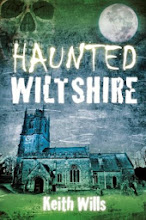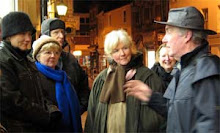


One of my favourite spots in Wiltshire (I have many) has to be the impressive group of hills that stretch between the villages of All Cannings and Alton Priors. Within this group stands Wiltshire's highest point, a point that has given rise to many a light-hearted debate over the years amongst the locals. It was claimed by some that Tan Hill at All Cannings was the highest point, whilst others disputed this claim and countered that nearby Milk Hill at Alton Priors should carry the title of ‘king of the hills‘. To settle this debate, a survey was carried out in 2009 by a team from the BBC’s Countryfile program using state of the art satellite GPS technology. Accompanying the BBC was Paul Denyer from Ordnance Survey using similar equipment. Their combined findings proved that Milk Hill at 294.19 meters just pipped Tan Hill to the post at 293.93 meters, a mere 26cm separating the two. Both stand at around a 1000 feet above sea level and offer splendid views across the Vale of Pewsey and Salisbury Plain.
These beautiful rolling hills are part of the ancient Ridgeway passage, walked by shepherds (still are) drovers and tradesmen for thousands of years. Strange tales of spooky encounters have been handed down over the years, not just by shepherds and the like but more recently by hill-walkers. One spot in particular would seem to have attracted more than its fair share of strange tales - a long barrow named Adam‘s Grave.
Adam’s Grave
One of the most spectacular of Wiltshire long barrows must surely be the classic trapezoidal shaped Adam’s Grave or Woden’s Barrow to give it its Saxon name. Set high up on Walkers Hill between Milk Hill and Knapp Hill, Adam’s Grave is certainly meant to be seen. This Neolithic barrow measures approximately 60m long by 6m high and is flanked either side by two deep ditches approximately 6m wide by 0.9m deep. At the southeast end there are two sarsen stones known colloquially as ‘Old Adam and ‘Little Eve’, these mark what would have been the entrance to the barrow. The interior burial chambers (there is no access now) offers evidence of oolithic limestone drywall construction similar to those at West Kennet long barrow 4k to the north close to Silbury Hill. The barrow was opened in 1860 by John Thurman (not to say it wasn’t plundered earlier by ‘hill diggers’ as many were) a noted local archaeologist. Four incomplete skeletons were discovered and removed along with a leaf-shaped arrowhead, indicative of Neolithic flint working. It’s a dramatic construction that would most likely have been the final resting place of some dignitary or the like, such is its dominance in the landscape.
Folklore
Adam’s Grave was thought to be the final resting place of a giant. It is said, that should you run round it seven times you will run the risk of waking him and no doubt suffering his wrath. Just the thought of having to run round this huge tumulus seven times is enough for me to ensure the giant’s continued slumber.
In her book 'Ghosts and Legends of the Wiltshire Countryside', the late Kathleen Wiltshire, who spent some forty years collecting stories of local folklore in Wiltshire, recounts a story told to her by a Miss Murial Cobern.
‘Miss Cobern had an experience on Walker's Hill in the summer of 1965 or 66. She was walking back from the barrow above the White Horse, towards the lay-by at the top of the hill, where she had left the car. About fifty yards from the barrow she suddenly felt very uneasy, and glanced around; it was very cloudy and rather cold, and no one else was about. A flock of sheep through which she was passing seemed untroubled, so she went on. Suddenly she could distinctly hear horses' hooves thudding, as if a whole army was coming at full gallop; but there was not a horse to be seen anywhere. Miss Cobern, walking much faster she admits, passed Adams Grave, and could hear the hooves no longer‘.
I do wonder if Miss Cobern may have inadvertently been privy to a ghostly re-enactment of one of two battles that took place near to Adam’s Grave, both of which are recorded in the Anglo-Saxon Chronicles.
The first battle was fought at ‘Woden's Burg’, now Adam's Grave in the year AD592. The Chronicle states: Her micel wælfill wæs æt Woddes beorge, 7 Ceawlin wæs ut adrifen. (There was great slaughter at Woden's Hill, and Ceawlin was driven out). Ceawlin was king of Anglo-Saxon Wessex. In most versions of the Anglo-Saxon Chronicle the entry does not record the identity of the force opposing Ceawlin, though it is thought they were most likely British.
The second battle in AD715 records the entry: Her Ine 7 Ceolred fuhton æt Woddes beorge. (There Ine and Ceolred fought at Woden's Hill) Ine was king of Anglo-Saxon Wessex and Ceolred was king of Anglo-Saxon Mercia. The identity of the opposing force is not recorded.
Several Anglo-Saxon battles took place near Adam’s Grave and the escarpment of Knapp Hill. The topography of the area would have been of strategic importance to the Saxons and a prise worthy of conflict, since it lay close to the passage of Wansdyke where the ancient Ridgeway interconnects. The passage was known by the name of ‘read geat’ or ‘red gate or gap’ to the Saxons and it was most likely this 'gap' (passage) that they saw fit to defend on occasion at Wodnesbeorg (Adam’s Grave).
Horses giving fright for no apparent reason in the hills near Adam’s Grave and along The Ridgeway towards Knapp Hill are not uncommon, as are the sounds of galloping hooves where there are no horses. Tales of eerie encounters with ghostly figures abound, as do reports from folk who say that have heard the chilling sounds of hounds (thought to be barrow guardians) their baying howls echoing across the misty hills at dawn.
Standing on top of Adam’s Grave and gazing down upon the dramatic, ancient landscape prompts thoughts of the fearsome battles that are said to have taken place here. The agonizing cry of men cut down by the sword and the snort and whinny of terrified horses. Battlefields have long been associated with hauntings, so it is not inconceivable to consider the possibility that as a result of the horrific violence which took place during those battles, an 'imprint' or 'residue' may have been etched into this now tranquil landscape.






No comments:
Post a Comment